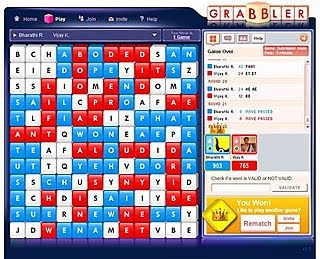
Woke up with sleepy eyes, rubbed them to clear my hazy vision. Opened my laptop and saw my news of the day. Google releases new web browser "Chrome". My mid-week holiday was certainly going to be busy. Putting on my "testing goggles" I started looking for the download link. Google made sure my hunt was easy. The link started downloading a 475 KB file. A web browser setup? 475 KB? Looking at it in disbelief, I let it continue. After all, who knows with Google.
The setup file when clicked started another download and installation process. So that was it. A 475 KB application to download the actual setup. The download failed at least a couple of time. It was disappointing. Few times it simply hung and the other times it returned me some weird exception message. The link on the error dialog, lead me to no help. Some divine intervention and all of a sudden it finished installation. Few clicks for importing favorites, history etc from my darling Firefox and I see my new browser.
There I am, greeted with the new interface which made my screen look larger. The Chrome certainly gives you a lot of web space, since it removes a lot of not-so-frequently used buttons and tool bars. It makes you forget that you are using a web browser. It keeps it simple and means business i.e. web browsing. The sole focus of the Chrome is the web application and not the browser itself.
I was expecting it to load a default homepage on the first run, which is kinda customary for other web browsers, on the contrary I see my recently visited sites and bookmarks nicely laid out. The address bar has the auto-complete feature, so my butter-fingers will get some rest. I was falling for it.
Performed a few of my mundane tasks, checking emails, browsing, reading news, blogs, watching videos etc., most of the websites opened visibly fast. I wasn't sure but it did appear to be fast. I read about the technology behind Chrome, it certainly is impressive. It has the new Javascript virtual machine, V8, which is said to be a better solution for rich Web applications. So operations like "drag and drop" which were not very smooth earlier would be a breeze in the Chrome. Each tab is said to work inside a new process, which makes the life of malwares difficult. If a bad Java script was using lot of resources you can simply kill it. The Chrome has an all new task manager. Yes, a task manager(shift+esc) just like the windows to terminate a web application which is using lot of CPU/memory resource. Google has moved up, in this respect by treating each open tab as a different web application. With the Chrome, Web applications will now begin to be treated at par with desktop applications. 'One-tab one-process' also makes me believe, the web browser is a purely multi-threaded application. So, one slow web application should not affect loading the other.
One of the cool features, I found was, I could tear a certain tab away from the rest of the tabs. This is particularly useful for some one like me, who doesn't close his tabs during my day. Only when the number comes to about 30-40 open tabs do I think of closing the ones not being used. Now, I can tear away the tabs I would still need(lesser in number), and close the rest(more in number) one-shot.
If I am not wrong the FF introduced the 'open in new tab', similarly the Chrome has a new right click context menu feature, 'Open link in new incognito window'. So my privacy has been taken care of. Anything I open in this window is not saved on the system. This window runs completed isolated from the system.
I am contemplating a shift from FF to the Chrome, but it will take a while as I cant do without my darling FF's plug-ins and most important, the Chrome doesn't have a progress bar. How could you guys have missed it? My serious concern is over the amount of data Google would share with the advertisers. Google generates a lot of revenue from ads. I wonder, if they now get to know every site I open from the Chrome. Does it mean I would be spam-ed more? It raises my personal fear of, 'Google will control the world!'. Web search, Social networking, Email system, Document editing, Photo Storage, Video storage, Mobile platform and now a web browser? Whats next, an operating system?
Keeping all this aside, I would continue to use the Chrome. I am a technology freak. I will continue to use and admire the innovation, as and when it comes.
Final verdict, the Chrome has the shine but lacks the finish.

